Whether you’re a marketer, a small business owner, or anyone else taking advantage of email marketing, the last thing you want is for your cold email campaigns to not be seen by your recipients.
One of the most common reasons why this happens is because they end up in junk and the spam box instead of the inbox.
In this guide, we’ll show you how to avoid this from happening, in order to get the best out of your email outreach and increase your open and click-through rates.
Let’s get started.
Link building cheat sheet
What Are Spam Words?
Spam words are words or phrases that email providers have identified to represent suspicious or malicious activity.
In order to protect the recipients from such actions when they receive an email, email spam filters are triggered to identify whether any spam trigger word has been used, as well as which ones.
Should an email be classified as spam, it’ll go straight to the spam folder instead of the inbox.
Why is that bad?
Because your email’s open rates are drastically reduced since there are fewer chances for it to get noticed, but even if it does, it’s not as trustworthy anymore.
Here’s what a spam folder will typically look like:
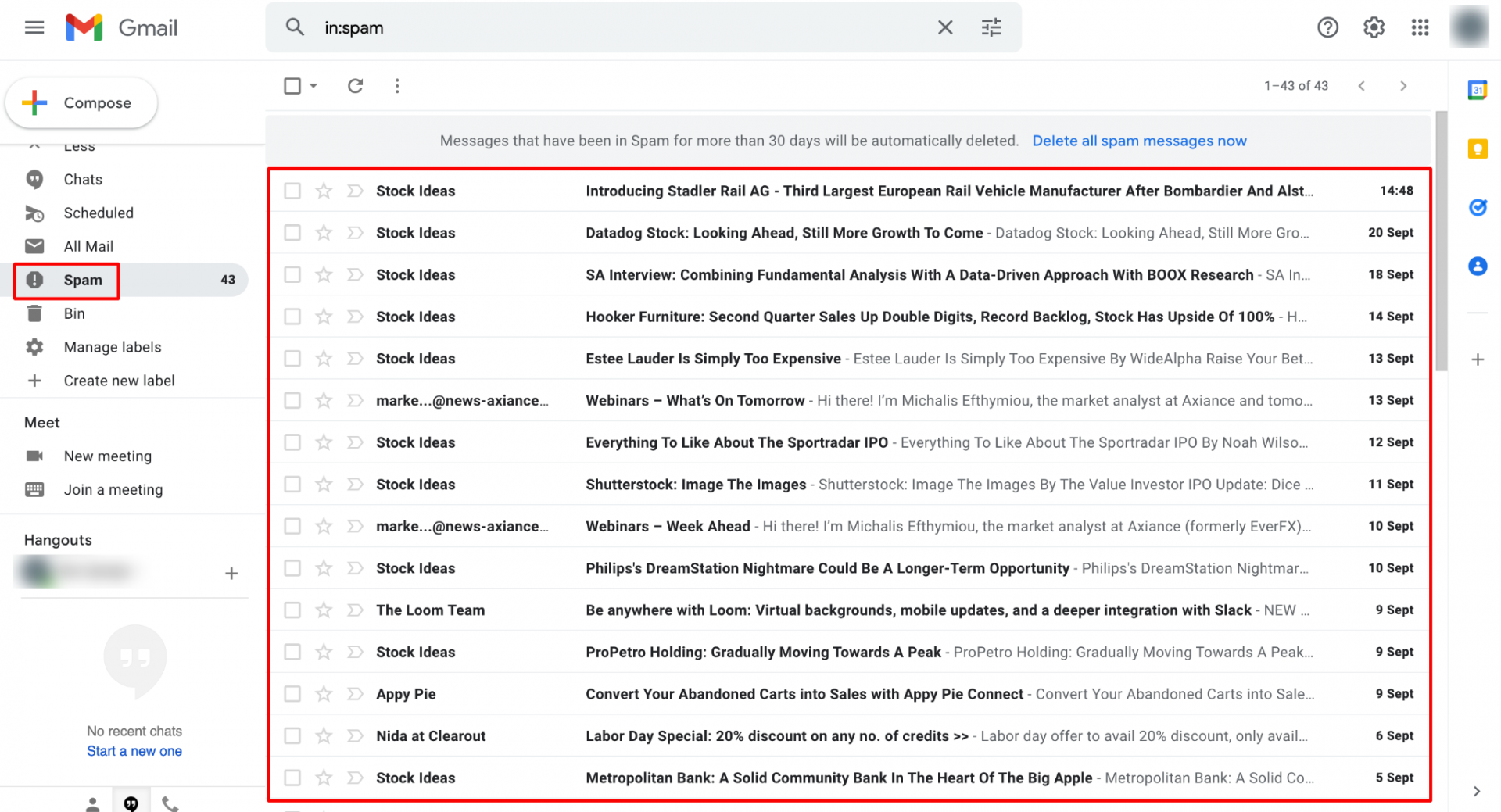
That’s exactly why it’s important to pay attention to which words you use when writing an email; whether that’s for personal or business matters.
Author’s Note: Avoiding spam words isn’t only in terms of the email’s content, but also the email subject line.
Let’s now have a look at the most important reasons why your email might be marked as spam.
10 Reasons Why Your Emails Go to Spam
We just said that you should avoid using some words or phrases that might trigger spam filters.
This is the first of many reasons why your email might go to spam.
Let’s have a closer look at this, as well as some of the most common ones.
Reason #1: Your content will trigger spam filters
Email providers have constantly been improving their algorithms over the years to identify whether an email is spam or not.
Spam words play a major role in activating spam filters and excessive use of them should be avoided.
If you’re wondering which words we’re specifically talking about, we’ll go through many of them in detail later on in this guide.
To always be on the safe side of spam filters, you can use Respona’s built-in email checker, which, in addition to checking for spam words, estimates your chances of getting a reply based on your subject and email body length, question count, links, etc.
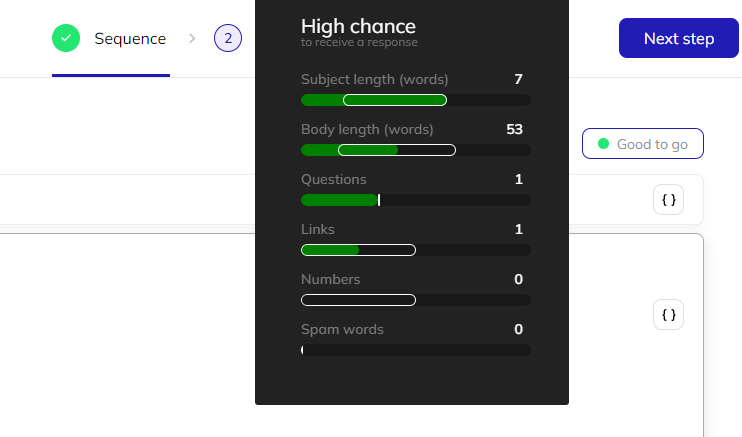
Is that the only way your email might end up in a spam folder?
Definitely not, since there are more reasons that contribute to this.
Let’s go through more of them.
Reason #2: You’ve added attachments
It’s normal to add attachments in your email, but when your recipient isn’t expecting them, this might be marked as suspicious behavior by email providers; there are simply too many scam attempts using them too.
Especially when writing cold emails, we strongly recommend avoiding the use of attachments.
Moving on to the next reason.
Reason #3: You’re sending bulk emails
Another reason why your email might go to spam is that you’re sending too many of them at once.
Mass emails are almost always marked as a spammy action, so obviously this is the last thing you want for your email marketing campaign.
Thankfully, there are a few ways around this, such as sending your emails with a small delay in between them.
Smart, right?
Now, let’s talk about how your emails sent in the past can affect your current outreach efforts.
Reason #4: You’ve got low engagement rates
Assuming your past email campaigns had very low engagement rates, such as open and click-through rates, this could potentially mean that your recipients aren’t interested in what you have to offer, at least in the eyes of email providers.
If you’re wondering how to calculate your email campaign’s open rate, all you have to do is divide the number of emails read by the total number of emails delivered.
For example, let’s assume your mailing list consists of 100 subscribers but only 20 of them actually opened your email. That’s an open rate of:
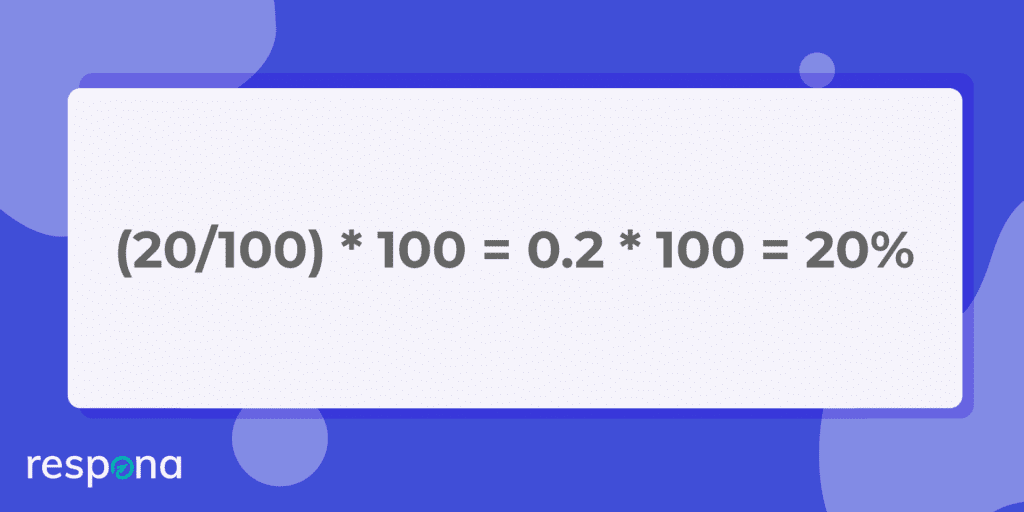
Author’s Note: In order for an open rate to be considered “good”, keep in mind that it should be around 20%, but it varies based on the industry.
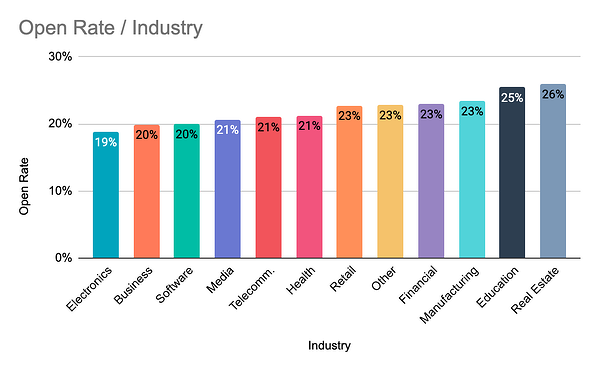
Similarly, to calculate the click-through rate you have to divide the number of recipients who clicked on at least one link in your email by the total number of emails delivered.
Assuming your mailing list consists again of 100 subscribers, but only 5 of them clicked on a link, that’s a click-through rate of:
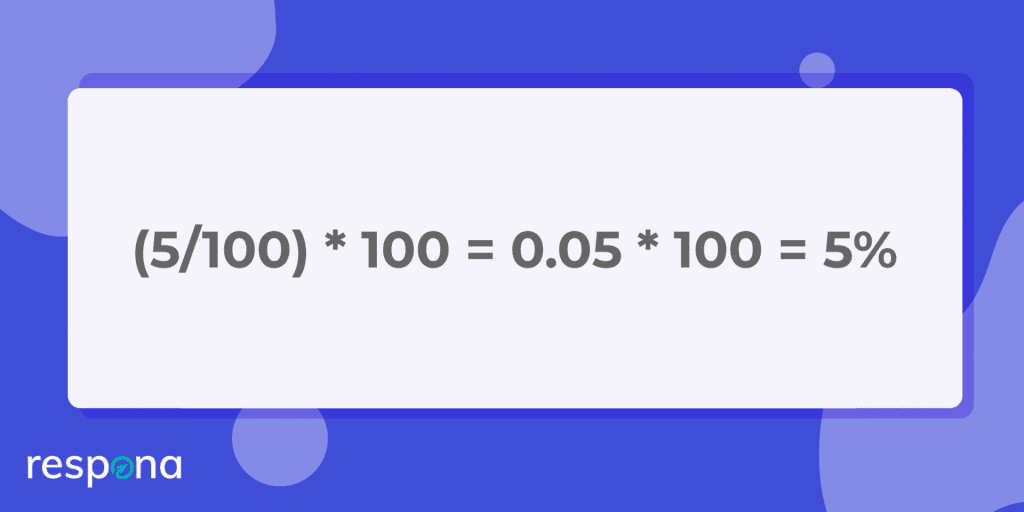
Author’s Note: The average click-through rate is estimated to be around 2.5%, so anything above that is considered “good”.
Generally speaking, low engagement rates tend to lead your emails to the spam folder as a way to potentially protect recipients; make sure your emails are interesting and relevant so you can increase those rates.
Actually, according to a study, 75% of spam invitations detected were of no or low relevance to the recipients.
We can’t say we’re surprised by that.
Overall, we recommend tracking all metrics that can increase your email deliverability.
One of the most important ones is the bounce rate.
Let’s get into it.
Reason #5: You’ve got high bounce rates
To put it simply, this metric shows the percentage of email addresses that didn’t receive your email.
There are many reasons why this might happen, with the most common ones being that the recipient’s email address has been deleted, it contains a typo, or that their inbox is full.
The formula to calculate the bounce rate is simple; divide the number of bounced emails by the total number of emails sent.
If our mailing list consists of 100 email addresses and 2 of them bounced, that’s a bounce rate of:
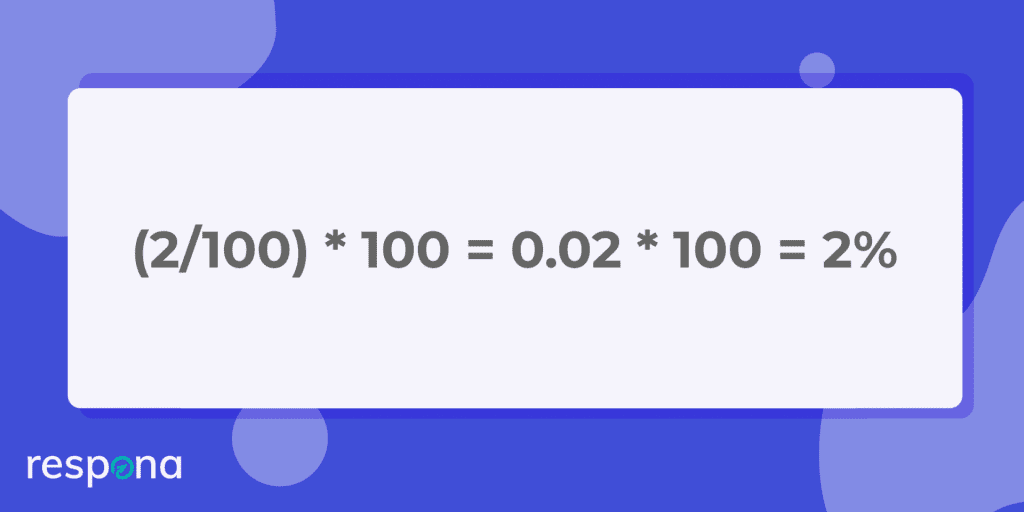
The reason why this metric is important is that percentages that are too high can mean that you’re guessing email addresses, which for email providers is a sign of suspicious – and potentially spammy – behavior.
Author’s Note: Keep in mind that the average bounce rate for emails is below 2%, so anything above that benchmark will need investigating.
Should one or more of your emails get bounced, this is what a typical message from your email provider will look like:
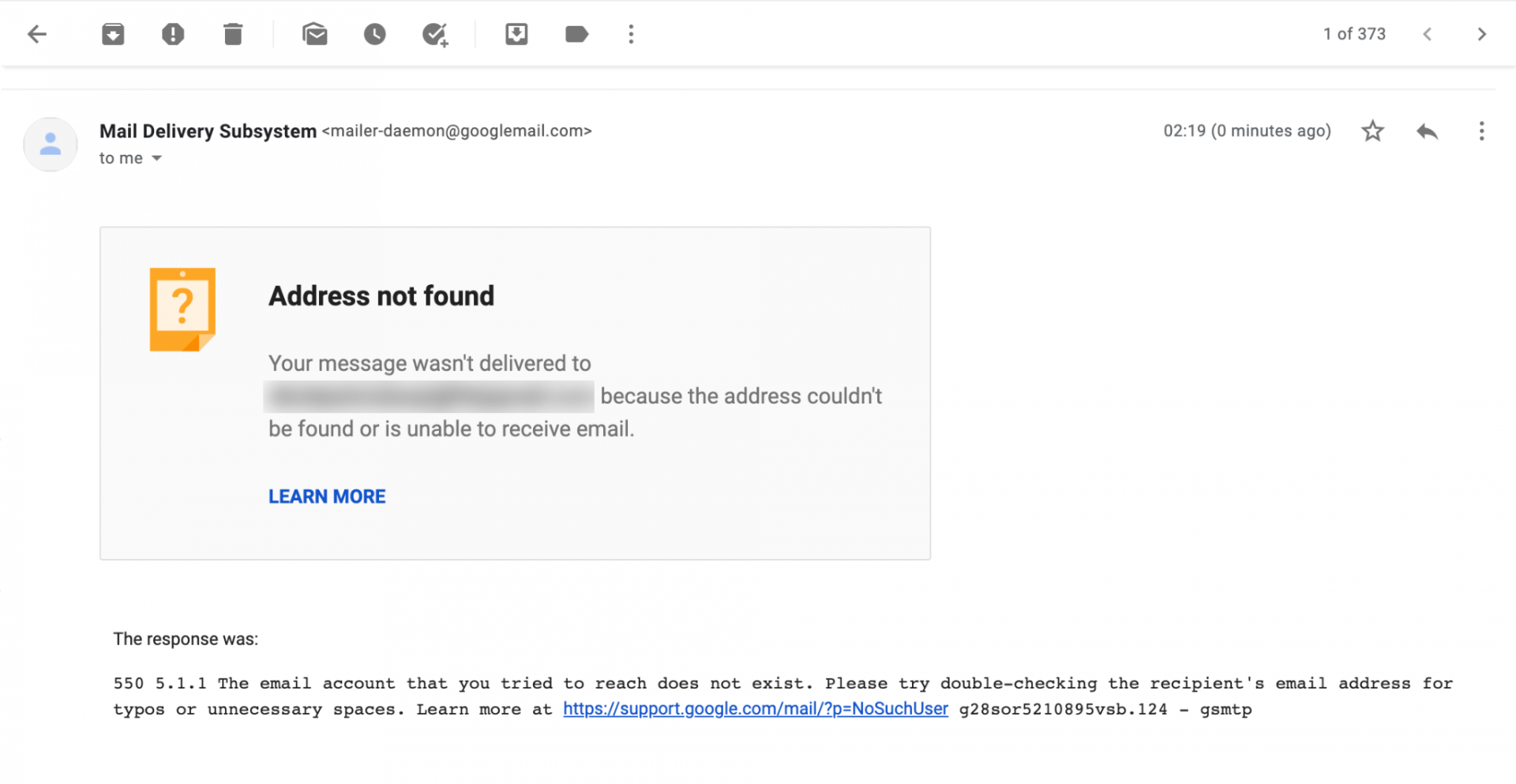
Alternatively, if you’re using an email marketing automation platform, in most cases you’ll be able to see your campaign’s metrics including the bounce rate.
This is why, when creating your mailing list, you must make sure that it’s clean so as many of your subscribers as possible receive your emails.
Moving on to the next reason.
Reason #6: You’ve got too many spelling mistakes
Another pattern identified in unsolicited emails that have the intent to scam or mislead someone is the high frequency of spelling and grammatical errors.
This doesn’t automatically mean that a couple of misspellings will lead your email to the spam folder, but it’s common for scammers from non-English speaking countries to use Google translate or other alternatives.
As a result, their emails contain a high amount of errors that email providers are now able to identify in order to protect their users.
Impressive, right?
Now let’s have a look at the seventh reason why your email might go to spam.
Reason #7: Your sender information isn’t clear
What email providers also pay attention to is your sender information; meaning that your email address should clearly show who you are or who your company is.
Should this information be misleading, email providers will rightly mark you as spam in order to protect recipients.
This includes both your domain name, as well as your “From,” “To,” “Reply-To,” and routing information.
Here’s what a good and clear email address would look like:
And the sender’s information would say: “Michael from Respona”.
On the other hand, a misleading address would look something like this:
Which clearly doesn’t contain the right information for email providers to trust the contents.
The better your sender reputation, the less likely it is for your email to go to spam.
If you want to make sure your identity is as legitimate as possible, you can also add some extra information to your email signature; such as your name, the company you work for, your role in it, as well as links to your own or your company’s social media accounts.

Let’s continue to the last reason.
Reason #8: You’ve used too many images
We recommend avoiding the usage of too many images compared to the amount of text.
While adding images in cold emails isn’t bad, you should keep a balanced image-to-text ratio because email algorithms can’t tell what’s included in images.
The excessive use of them can be considered as an attempt to “trick” the spam filter.
Reason #9: You Didn’t Authenticate Your Domain
Proper domain authentication is a vital step you need to take before launching any outreach at all.
There are three main authentication protocols that you need to worry about: DKIM, DMARC, and SPF.
DKIM is an email authentication protocol that uses a digital signature to verify that an email message was sent from an authorized sender and was not altered during transmission.
The digital signature is created using public key cryptography, which uses a pair of keys: one public and one private.
The sender’s public key, which is stored in a public repository, is used to verify the digital signature. The sender’s private key is used to create the digital signature.
DMARC is an email authentication protocol that allows domain owners to specify how to handle emails that fail authentication checks.
DMARC also provides a mechanism for ISPs to report back to the sender about how their emails are being handled.
SPF is an email authentication protocol that allows domain owners to specify which IP addresses are allowed to send emails from their domain.
When an email is received, the receiving server will check the SPF record of the sending domain to determine if the sending IP address is authorized to send emails from that domain.
If the sending IP address is not authorized, the email will be flagged as suspicious and may be blocked or quarantined.
Reason #10: You Didn’t Warm Up Your Email
Email warmup can be done in two ways: manually or with a tool.
Manual warm up involves starting your outreach at a low daily email limit (say, 10 emails/day), and slowly scaling up to your target daily amount week after week.
This allows you to slowly gain some reputation for a new email domain, reducing your spam rates.
Email warmup tools function differently – they connect you to a network of users and starts sending them messages on your behalf.
On their end, the tool also replies to your emails, making your email service providers think that you’re having real conversations.
This also increases domain reputation and reduces spam rates.
To sum up, here’s the complete list of the ten reasons we believe emails tend to go to spam:
- Your email content will trigger spam filters
- Your email contains an attachment
- You’re sending bulk emails all at once
- Your email conversion rates are too low
- Your email bounce rates are too high
- Your email has too many spelling and grammar mistakes
- Your sender information isn’t clear enough
- You’ve added too many images compared to the text
- You didn’t authenticate your domain
- You didn’t warm up your accounts before sending campaigns
Category #1: Symbols
The first category we’re going to talk about is symbols.
Symbols are one of the most common things that ticks off spam triggers, which is why email marketers avoid using them in their email campaigns; especially in the subject lines.
How often do you receive emails with the excessive use of dollar signs and other symbols in your spam folder?
Chances are; quite often because they tend to make exaggerated claims.
Here’s a list of the symbols – either alone or in phrases – that we recommend you avoid using:
- #1
- $$$
- Make $
- Save $
- 0%
- 0% risk
- 100%
- 100% free
- 100% satisfied
- 99.9%
- 50% off
- 4U
- !!! (Multiple exclamation marks)
- *** (Asterisks used for emphasis or to disguise words)
- ??? (Multiple question marks)
- %% (Percentage signs)
- ++ (Pluses used for emphasis)
- == (Double equals used for emphasis)
- $$ (Multiple dollar signs)
- @@@ (Multiple at symbols)
- HOT (Hot surrounded by asterisks)
- [ ] (Square brackets often enclosing calls to action)
- { } (Curly braces used similarly to square brackets)
- ++FREE++ (Free surrounded by pluses)
- $$$Bargain$$$ (Bargain surrounded by dollar signs)
- << (Double angle brackets to create a sense of urgency)
- ! (Double exclamation marks used for excitement or urgency)
- ^^ (Carat symbols sometimes indicating superscript or attention)
- ** (Double asterisks used for bolding or highlighting in plain text)
- ” ” (Quotation marks for emphasis)
- ( ) (Parentheses for adding “important” information)
- || (Vertical bars used for separation or drawing attention)
- ~~ (Tildes used for decoration or crossing out)
- ¤¤ (Currency or generic symbols used to denote deals or money)
- ¢¢ (Cents symbols indicating price or bargains)
- :: (Colons used for separation or to mimic digital clock displays)
- [!SPAM] (Explicitly stating spam in brackets)
- <% (Angle bracket with percentage, sometimes used in scripting code or to illustrate discounts)
- ⇨ (Unicode arrows for emphasis)
- ☞ (Pointing finger symbols)
- ♛ (Royalty symbols to denote exclusivity)
- ✈ (Travel or airplane symbols for vacation offers)
- ⚠ (Warning symbols often used in scams or fear-based marketing)
- ₿ (Bitcoin and other cryptocurrency symbols used in investment or wealth-related spam)
Let’s move on to the next category.
Category #2: Words That Create Urgency
Our next list of spammy words is around words that create urgency.
Unnecessary and exaggerated words or phrases that urge you to take action are some of the most common tactics spammers use for their phishing gimmicks, so you should be able to spot them easily.
Once again, many of them create false promises such as “Last chance” or “Once in a lifetime”.
If you spot these or any of the spam words we’ll list below in an email, avoid opening it and make sure to not use any of them in your own cold outreach campaigns.
Here are some examples:
- Act now
- Apply now
- Become a member
- Call now
- Click below
- Click here
- Open link
- Get
- Get it now
- Get started now
- Do it today
- Don’t delete
- Exclusive deal
- Special promotion
- Important information regarding
- Information you requested
- Instant
- Instant access
- Limited time
- New customers only
- Order now
- Order today
- Great offer
- Please read
- See for yourself
- Sign up free
- Take action
- Expire
- Offer expires
- Now only
- This won’t last
- Urgent
- What are you waiting for?
- While supplies last
- Once in a lifetime
- Only for you
- Will not believe your eyes
- You are a winner
- You have been selected
- Cancel at any time
- Last chance
- Last day
- Don’t wait
- Join millions of people
- Free priority mail
- Rush
- Buy today
- Hurry up
- Don’t miss out
- Final hours
- Click now
- Exclusive access
- Members only
- Pre-approved
- Limited offer
- Don’t delay
- Only today
- Act quickly
- Time-sensitive
- Act immediately
- Don’t miss this
- Once in a lifetime offer
- Fast-acting
- For a short time only
- Time is running out
- Instant savings
- One day only
- Today only
- Clearance
- Before it’s too late
- Immediately
- Ends soon
- Flash sale
- Going fast
- Limited number available
- Limited supply
- Must end soon
- Offer ends soon
- Today is the day
- Almost over
- Final sale
- Last opportunity
- Act fast
- Before it’s gone
- Closing soon
- Don’t miss
- Exclusive offer
- For immediate release
- Hottest deal
- Access now
- Running out
- Claim now
- Don’t be left behind
- Expires at midnight
- Immediate response
- Instant bonus
- Instant discount
- It’s now or never
- Might be your last chance
- Never again
- Register now
- Special ends soon
- Stand by
- Stocks limited
- Tick-tock
- Bonus ending soon
- Final call
- Grab it now
- Last minute deal
- Secure your spot
- Supplies running out
- Unlock now
- Blink and you’ll miss it
Moving on to the next category.
Category #3: Words That Create False Promises
This category is about words creating exaggerated claims and making false promises.
It’s very common for spam emails to try and lure people into taking an action, such as clicking on a link that’s potentially malicious.
This can be done by creating false claims and promising things like money, fantastic deals, risk-free opportunities, and much more.
Let’s have a closer look:
- No hidden charges
- No hidden costs
- Lose weight
- Best price
- Best rates
- Cash bonus
- Money order
- Make money
- Big bucks
- Big money
- Pure profits
- Cures
- Weight loss
- Meet singles
- No catch
- No cost
- No credit check
- No fees
- No gimmick
- Refinance
- No interest
- No investment
- No capital
- No obligation
- No purchase necessary
- No questions asked
- No strings attached
- No experience
- Requires initial investment
- This isn’t a scam
- This isn’t junk
- This isn’t spam
- Earn extra cash
- Earn extra income
- Additional income
- Expect to earn
- Fast cash
- Financial freedom
- Lowest price
- Free access
- Free consultation
- Free hosting
- Free info
- Free investment
- Free membership
- Free money
- Free preview
- Free quote
- Free offer
- Free sample
- Free trial
- Free web traffic
- Free search engine listings
- Free gift
- Free DVD
- Full refund
- Name brand products
- Month trial offer
- Get out of debt
- Increase sales
- Free leads
- Increase traffic
- Satisfaction guaranteed
- Get paid
- Get rich
- Unsecured credit
- Own boss
- Work from home
- Home-based business
- No credit card
- Accept credit cards
- Credit card offers
- Low mortgage rates
- Low interest rates
- Easy terms
- Priority mail
- Miracle
- Guaranteed results
- Risk-free
- 100% authentic
- Never fails
- Instant results
- Full income
- Easy money
- Financial stability
- Get rich quick
- Be your own boss
- Unmatched
- No risk
- Millionaire
- Unlimited potential
- Revolutionary
- Breakthrough
- Magic
- Secret to success
- Incredible gains
- Skyrocket
- Groundbreaking
- Optimal
- Exclusive remedy
- Permanent solution
- All you need
- Top dollar
- Bargain
- Lifetime deal
- Lifetime access
- Never before
- Beat any price
- Once in your life
- Unbelievable deal
- Unreal
- All natural cure
- Instant pain relief
- Perfect credit
- Prepaid offer
- Prize award
- Promise you
- Radical
- Rare opportunity
- Direct marketing
- Eliminate debt
- Financial independence
- Full warranty
- Hidden gem
- Jackpot
- Massive profits
- Mega cash
- Never again
- No hassle
- Perfect score
- Professional grade
- Quadruple
- Six-figure income
- Stress-free
- Triple
- Unbeatable
- Vaccination
- Cancel at any moment
- Celebrity endorsed
- Fixed income
- High-converting
- Highest quality
- Ironclad
- Lifetime guarantee
- Magic bullet
- Miracle cure
- Problem-free
- Reverse aging
- Revolutionary formula
- Zero percent failure
- 100% more
- 100% satisfied
- Action required
- Become debt-free
- Best deal
- Billionaire secrets
- Bonus cash
- Cancel anytime
- Certified winner
- Clear the debt
- Double your wealth
- Dream come true
- Full compensation
- Get rich schemes
- Get your share
- Incredible offer
- Issue credit
- Make a killing
- Million dollars
- Money back
- One-time offer
- Only chance
- Score big
- Triple your income
- Unlimited joy
- Windfall
- Win big
- Without fail
- Zero chance of loss
- Zero percent failure
Those are some of the most common email spam words to avoid using if you want your campaign to stay out of the spam folder.
You might also want to steer away from sensitive terms such as “billing address”, “order form”, “credit bureau”, and “Social Security Number” that email providers have tightly correlated with scamming attempts.
Plus, many terms that are relevant to marketing activities like “marketing solutions”, “multi level marketing”, “online marketing”, and “direct marketing”, “marketing solution” are best avoided since they can act as email spam trigger words, too.
Overall, even though our list of related words and phrases can prove to be very helpful when creating a high-quality email, it’s important to remember all the reasons that contribute to the chances of it going to spam.
As long as you keep them in mind, you’ve got nothing to worry about!
Category #4: Medical Spam Words
Medical email spam words refer to words that are associated with health topics, medical treatments, and other related topics that are often used in email spam.
These words are usually used by spammers and scammers to trick people into opening their emails or clicking on links to malicious websites.
- Pharmacy
- Prescription
- Medication
- Drug
- Viagra
- Refill
- Discount
- Miracle
- Cheap
- Free
- Cure
- Treatment
- Pain relief
- Weight loss
- Anxiety
- Depression
- Mental health
- Herbal
- Natural
- Supplement
- Health
- Health care
- Cosmetic
- Botox
- Viagara
- Male enhancement
- Cholesterol
- Diabetes
- Cancer
- Health insurance
- Guarantee
- Miracle cure
- Risk free
- Miracle pill
- No side effects
- Healthcare
- Miracle product
- Medical breakthrough
- Secret formula
- Exclusive remedy
- Scientific breakthrough
- Revolutionary technology
- Instant results
- Anti-aging
- Arthritis
- Blood pressure
- Clinical trial
- Energy booster
- Enhancements
- Erectile Dysfunction
- Fat burning
- Fat loss
- Hair loss
- Hormone
- Immune boost
- Increase libido
- Increase stamina
- Instant relief
- Joint pain
- Laser therapy
- Legal pain relievers
- Lose inches
- Magic pill
- Male performance
- Medical solution
- Memory enhancement
- Mood lifter
- Muscle builder
- No prescription needed
- Online pharmacy
- Order meds online
- Pain reliever
- Quick recovery
- Rapid weight loss
- Reduce wrinkles
- Rejuvenate
- Sensual enhancement
- Serious pain relief
- Sleep aid
- Steroids
- Stop snoring
- Stress buster
- Stronger muscles
- Testosterone
- Ultimate diet
- Vitamins
- Wrinkle reducer
- Youthful
- Zero calorie
- ADHD
- Alzheimer’s
- Asthma
- Autistic
- Bipolar
- Brain boosting
- Burn fat
- Cardiac care
- Clinical studies
- Control blood sugar
- Dementia
- Detox
- Diet plan
- Eczema
- Eliminate toxins
- Enhance brain
- Fertility
- Fibromyalgia
- Full spectrum
- Gain muscle
- Heart health
- Hormonal balance
- Infection
- Inflammation
- Laser eye
- Medicinal oils
- Menopause
- Mental clarity
- Migraine relief
- Mood enhancer
- Natural healing
- No doctor visit
- Opiate alternative
- Organic remedy
- Osteoporosis
- Pain management
- Probiotics
- Psoriasis
- Regulate hormones
- Rehab
- Remove toxins
- Rheumatism
- Skin care
- Sleep solution
- Soothing relief
- Stop aging
- Thyroid
- Topical solution
- Tumor
- Wellness
- Xanax
Category #5: Sleazy/Dating Spam Words
Sleazy or dating-related spam words refer to words used in spam emails and other online content that are designed to entice people to click on links, view websites, or purchase products related to dating or adult services.
Spammers may also use images or videos featuring scantily-clad women or men in order to entice people to click on their links. These images and videos are often used on sites such as dating services, adult websites, and social media.
It is important to be aware of sleazy or dating-related spam words and to recognize when they are being used to deceive or exploit people.
- Love
- Romance
- Sexy
- Hot
- Flirt
- Desired
- Date
- Soulmate
- Mingle
- Attraction
- Loneliness
- Seduction
- Dear friend
- Passion
- Match
- Soul searching
- Desire
- Meet
- Relationship
- Amorous
- Intimacy
- Longing
- Adore
- Hot babe
- Chemistry
- Love connection
- Love affair
- Sexy singles
- Flirtatious
- Casual encounters
- Love letters
- Invitation
- Dating service
- Desirable
- Love-seeking
- Hot date
- Lonely hearts
- Sensual
- Unattached
- Amorous adventure
- Love connection
- Soul searching
- Seductive
- Love life
- Meet girls
- Meet guys
- Chat now
- Companion
- No strings attached
- Erotic
- Private affair
- Wild
- Hook up
- Adult dating
- Dirty
- Lonely
- Exciting people
- Thrills
- Girlfriend
- No commitment
- Boyfriend
- Secret love
- Discreet encounters
- Hotties
- Forbidden
- Affair
- Fling
- Single ladies
- Single men
- Exotic
- Cheating
- Extramarital
- Daring
- Steamy
- Romance chat
- Lover’s lane
- Thrills
- Seeking
- Lusty
- Risqué
- Rendezvous
- Provocative
- Naughty
- Fetish
- Cougar dating
- Toyboy
- Younger women
- Older men
- MILF
- Sugar daddy
- Sugar baby
- Swingers
- Playmate
- Adult fun
- Bachelor
- Bachelorette
- Bride-to-be
- Stud
- Paramour
- Cuddle
- Fireworks
- Kinky
- Makeout
- Matchmaking
- Blind date
- Enchanting
- Cupid
- Pleasure
- Lovers
- Fantasize
- Arouse
- Spice up
- Tryst
- Trophy wife
- Girlfriend experience
- Divorcee
- Dominate
- Submissive
- Heartthrob
- Menage
- Secret rendezvous
- Lingerie
- Matches nearby
- Adult conversation
- Pheromones
- Tantalizing
- Cuddle buddy
- Discreet hookups
- Intense encounter
- No inhibitions
- Steamy chat
- Casual fun
- Playful
- Adult profiles
- Enthrall
- Ravishing
- Beguile
- Breathy
- Sensual date
- Charmer
- Bewitching
- Alluring
- Steamy nights
- Adult entertainment
- Love coach
- Spicy connections
- Tailored match
- Lustful
- Craving
- Touch
- Feelings
- Pleasure seeker
- Secret desires
Link building cheat sheet
Now Over to You
There you have it.
You now know all the basics when it comes to spam words, as well as how to create an email campaign that stays out of spam.
We hope that the next time you start writing an email, this piece of content will be very helpful and our list will act as your guide.
If you’re looking for an email marketing and outreach software that’ll help you step-by-step in your cold outreach efforts, don’t hesitate to start your 14-day free trial with Respona.
Our hassle-free way of handling and personalizing your email campaigns will help ensure you stay out of spam for good!
Thanks for reading.







